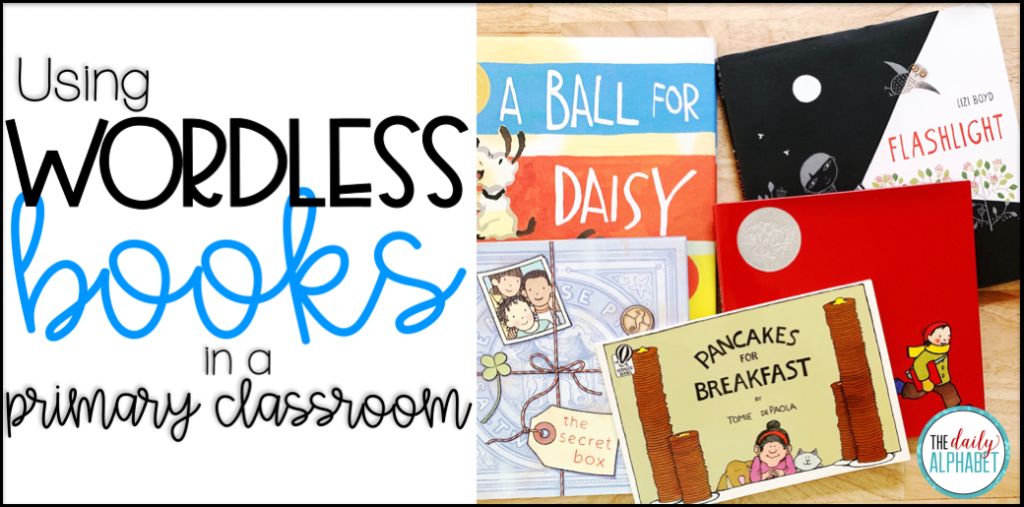
Books, books and more books! For every topic that you want to learn about, you can find a book on it. I love to introduce and review concepts with any books that I can get my hands on! Every year when I introduced new books into our day, I never gave wordless books much thought. It wasn’t until later on in my career that I realized how powerful they were. Now I’m on a hunt to add even more of them to my library! They lend themselves to multiple skills. So why should you include them in your classroom? Keep reading on to find out!
This post contains affiliate links. You can take a peek at my disclosure right here!
Building Confidence
Entering school for the first time can be a vivid experience. Once you add in everything that we ask students to do these days it can be completely overwhelming. I have found that wordless books can build up the confidence in each and every student in so many ways. A lot of times emergent readers will shut down when they encounter words, and I always hear “I don’t know how to read”.

Comprehension
Comprehension skills are extremely important and every reader needs the chance to practice their skills. Wordless books give students the opportunity to do this. They can actually focus on the story that is unfolding, as opposed to focusing on the words. This is what students need when we are beginning to teach comprehension. Students can sequence the events of a story, recall what has already happened and they can practice their inferring skills.

Children can also practice their storytelling skills, because we all know that they have active imaginations! Predictions can be made and they can learn to be on the lookout for visual clues. With wordless books, students can be an active participant in the story discussions. This ensures that no one gets left out of the conversation!
Writing
I know what you’re thinking. How can wordless books be great for writing? There are no words! I promise that it IS great for writing as well! Before we begin writer’s workshop, I have discovered that I must awaken their appetite for storytelling and introduce tons of vocabulary through picture walks. It is only through modeling and exposure will they begin to include these in their writing.

We also use wordless books when we are learning about labeling our illustrations. I like to use sticky notes and they help me to tap out our words, write the letters for the sounds and then we label the pictures in the book.

When they are ready, another mini-lesson includes writing a sentence for what’s happening on the page. Once you model new skills during writer’s workshop, then pretty soon you’ll have students who are trying to incorporate it into their own writing!

If you haven’t given wordless books a chance, I hope that you’ll try to introduce them into your classroom! I’ve gathered a selection of a few great titles to begin with, you can check them out right here. If you know of any other great uses for wordless books, please sound off below!
Pin for later!












